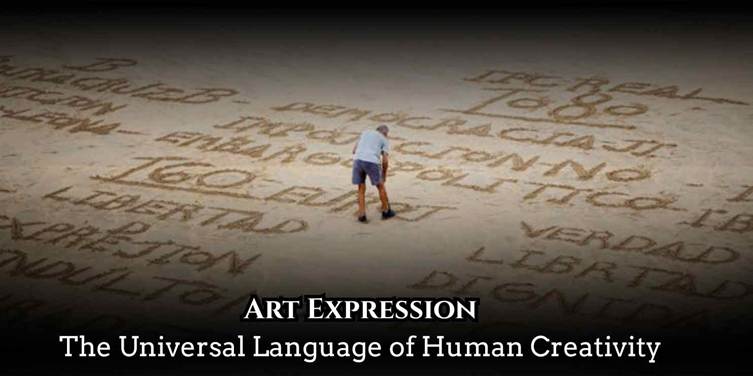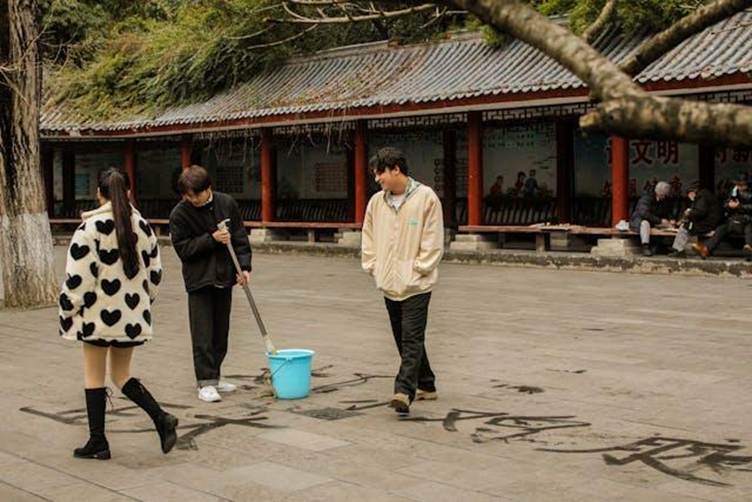Art has always been more than just colors on a canvas or shapes carved in stone it is a reflection of the human soul. Art expression captures the essence of how people use creativity to communicate feelings, stories, and ideas that words cannot describe. Whether through painting, sculpture, dance, or music, artistic expression serves as a bridge between thought and emotion. It allows individuals to share their inner worlds and connect with others on a deeper level.
Table of Contents
This article explores the meaning, evolution, and impact of art expression, revealing how it enriches lives through creative expression, self-expression through art, and the boundless freedom to communicate through beauty and imagination.

Definition and Meaning of Art Expression
At its core, art expression is the process of conveying emotions, ideas, or perspectives through creative mediums. It encompasses visual arts, music, literature, and performance all forms that reflect human creativity in art. Unlike mere decoration, artistic expression carries symbolic meaning and emotional depth.
Art as communication allows individuals to express thoughts that may be difficult to verbalize. A single brushstroke or musical note can embody passion, sorrow, or hope. Through personal expression in art, creators reveal pieces of their identity, offering viewers a glimpse into their inner lives.
Historical Background: The Evolution of Artistic Expression
The history of artistic expression stretches back to prehistoric cave paintings, where humans used symbols to document life and emotion. Over time, different civilizations developed unique forms of creative expression from Egyptian hieroglyphs to Renaissance masterpieces.
In ancient Greece, art celebrated the human form and divine beauty, while medieval art reflected faith and devotion. The Renaissance period introduced artistic creativity focused on realism, anatomy, and perspective. Modern and contemporary art expression broke traditional boundaries, embracing abstraction, symbolism, and emotion as key elements. Today, abstract art meaning and digital media continue to expand what art can represent.
The Importance of Artistic and Creative Expression
Art expression is vital to human growth and cultural identity. It promotes freedom of expression in art, encouraging people to explore thoughts and emotions without fear of judgment. Art enhances emotional well-being, fosters empathy, and stimulates imagination.
Through self-expression through art, individuals can process experiences, release tension, and build self-awareness. It is also an essential part of education, nurturing artistic creativity and problem-solving skills. On a larger scale, art and culture are intertwined art preserves history, challenges social norms, and unites communities across borders.
Art as Emotional and Personal Expression
Art and emotion are inseparable. From joyous dances to melancholic paintings, emotional expression in art reveals the human condition. Artists channel their deepest feelings into tangible forms, transforming pain into beauty or hope into color.
For many, art as therapy is a healing practice that encourages self-discovery and mental clarity. Drawing, painting, or sculpting helps people confront inner conflicts and express what they cannot say aloud. This connection between art and healing shows how expression through painting and other forms of art can nurture emotional resilience and personal growth.
Forms of Artistic Expression
The beauty of art expression lies in its diversity. Every art form offers a unique channel for communication and creativity:
• Visual arts: painting, sculpture, photography, and architecture represent the most tangible forms of artistic expression
• Performing arts: dance, theater, and music bring emotion and storytelling to life
• Literary arts: poetry, novels, and plays use words as a medium for creative expression
• Symbolic art: abstract or conceptual art communicates ideas through shape, color, and form
• Contemporary art expression: installations and digital art explore modern themes like identity, technology, and activism
Each form of expression allows individuals to share their worldview while contributing to a broader cultural conversation.

Symbolism and Interpretation in Art
Art often carries layers of meaning that go beyond its surface. Art interpretation is the process of uncovering these hidden messages. Every symbol, color, or texture can represent a deeper truth or emotion. For instance, blue might evoke calmness or sadness, while red can symbolize passion or danger.
Symbolic art invites audiences to think critically and emotionally. It encourages multiple interpretations, depending on the viewer’s background and feelings. This subjective nature of artistic expression makes it endlessly fascinating no two people experience a work of art in the same way.
Art Expression in Modern Society
In today’s world, art expression continues to evolve through technology and cultural exchange. Artists use social media, virtual reality, and digital tools to share their work globally, creating new spaces for creative expression. Modern movements emphasize diversity and inclusion, reflecting the voices of underrepresented communities.
Contemporary art expression often addresses pressing issues such as climate change, gender identity, and social justice. Art has become both a mirror and a megaphone reflecting reality and amplifying calls for change. The accessibility of art today allows everyone, from professionals to hobbyists, to participate in this universal dialogue of human creativity in art.
Challenges in Artistic Expression
While art is often celebrated for its freedom, art expression faces challenges. Some societies impose restrictions on freedom of expression in art, censoring works that challenge political or cultural norms. Commercialization also pressures artists to conform to trends, limiting personal expression in art.
Additionally, misunderstanding or misinterpretation can lead to controversy, as symbolic works may be perceived differently across cultures. Despite these obstacles, artistic expression remains a resilient force for truth, diversity, and empathy in human communication.
Conclusion
Art expression is a celebration of human imagination and emotion a universal language that transcends words and borders. Through creative expression, people share their joys, struggles, and dreams, connecting humanity across time and culture. Whether through visual arts meaning, music, or writing, art continues to inspire reflection, healing, and transformation. Embracing artistic creativity reminds us that every stroke, sound, or word holds power. To truly understand ourselves and others, we must continue to explore and cherish this beautiful form of expression.